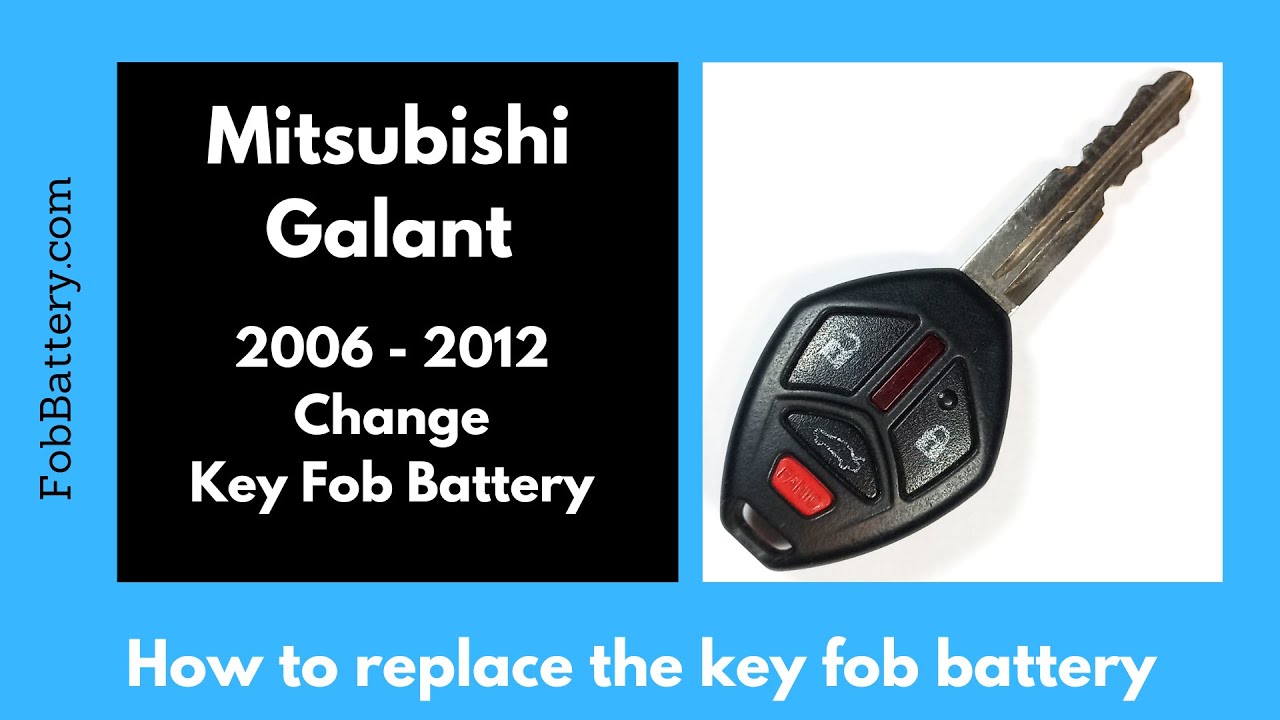Introduction to Key Fob Battery Replacement
Replacing the battery in your Mitsubishi Galant key fob is a straightforward task. You don’t need to visit a dealership or hire a specialist. This guide will walk you through the process step-by-step.
For this task, you will need a CR1620 coin battery and a flathead screwdriver. If you don’t have a CR1620 battery on hand, you can easily purchase one online.
- LONG LASTING PERFORMANCE: Panasonic CR1620 3.V batteries are engineered to provide reliable, long-lasting power
- CHILD RESISTANT SAFETY STANDARDS BASED PACKAGING: These authentic Panasonic lithium battery cells and packaging (in our “sunburst” package as shown) meet or exceed IEC 60086-4:2019; ANSI C18.3M Part 2:2024; CFR 16, Part 1700.20 and CFR 16, Part 1263 as required by Reese’s Law (Pub. L. 117-171, 15 U.S.C 2056e)
- LONG STORAGE LIFE: Our CR1620 batteries maintain power up to 8 years when unused and properly stored
Tools and Materials Needed
- Flathead screwdriver
- CR1620 coin battery
These items are inexpensive and readily available. You can find the CR1620 battery for a few dollars online or in stores.
Step-by-Step Battery Replacement Process
Opening the Key Fob
The first step is to open the key fob. Locate the slot below the key. This slot is along the seam in the plastic casing.
Insert the flathead screwdriver into this slot. Twist gently until you feel the key fob start to open. It’s essential to handle this part carefully to avoid damaging the components inside.
Removing the Battery
Once the key fob is open, you will see a small box inside. This box contains the battery. Be cautious, as the buttons inside can fall out if the key fob is turned upside down.
Locate another slot at the bottom of this box. Insert the flathead screwdriver and twist gently to open it. The battery will be visible at this point.
Use the screwdriver to gently pry the battery out. It doesn’t require much force. Just place the corner of the screwdriver under the battery and lift it out.
Inserting the New Battery
Take the new CR1620 battery. Ensure the positive side, marked with a plus sign and text, is facing down.
Place the new battery in the slot and snap it into place. Make sure it is securely positioned.
Reassembling the Key Fob
Now, reassemble the key fob. Align the two halves and press them together until they snap into place.
Next, pick up the face with the buttons. Align the red peg with the corresponding hole. Drop the face into place and set the back cover on top. Squeeze the key fob to secure everything together.
- LONG LASTING PERFORMANCE: Panasonic CR1620 3.V batteries are engineered to provide reliable, long-lasting power
- CHILD RESISTANT SAFETY STANDARDS BASED PACKAGING: These authentic Panasonic lithium battery cells and packaging (in our “sunburst” package as shown) meet or exceed IEC 60086-4:2019; ANSI C18.3M Part 2:2024; CFR 16, Part 1700.20 and CFR 16, Part 1263 as required by Reese’s Law (Pub. L. 117-171, 15 U.S.C 2056e)
- LONG STORAGE LIFE: Our CR1620 batteries maintain power up to 8 years when unused and properly stored
Testing the New Battery
To ensure the new battery is working, press any button on the key fob. The light should come on, indicating the battery is functioning correctly.
If the light doesn’t come on, double-check the battery’s orientation and make sure all components are correctly aligned.
Additional Tips and Information
Replacing the key fob battery is an easy task that can save you time and money. There’s no need to visit a dealership or hire a professional.
Having a spare CR1620 battery on hand can be helpful for future replacements. These batteries are inexpensive and have a long shelf life.
Frequently Asked Questions
What type of battery does the Mitsubishi Galant key fob use?
The Mitsubishi Galant key fob uses a CR1620 coin battery.
Where can I buy a CR1620 battery?
You can purchase a CR1620 battery online or at most electronic and hardware stores.
- LONG LASTING PERFORMANCE: Panasonic CR1620 3.V batteries are engineered to provide reliable, long-lasting power
- CHILD RESISTANT SAFETY STANDARDS BASED PACKAGING: These authentic Panasonic lithium battery cells and packaging (in our “sunburst” package as shown) meet or exceed IEC 60086-4:2019; ANSI C18.3M Part 2:2024; CFR 16, Part 1700.20 and CFR 16, Part 1263 as required by Reese’s Law (Pub. L. 117-171, 15 U.S.C 2056e)
- LONG STORAGE LIFE: Our CR1620 batteries maintain power up to 8 years when unused and properly stored
Do I need any special tools to replace the battery?
No special tools are required. A regular flathead screwdriver is sufficient.
How often should I replace the key fob battery?
Battery life can vary, but it’s generally a good idea to replace it every couple of years or when you notice a decrease in performance.
Can I replace the battery myself?
Yes, replacing the battery is a simple task that you can do yourself without any professional help.
What should I do if the key fob doesn’t work after replacing the battery?
Double-check the battery orientation and ensure all components are correctly aligned. If it still doesn’t work, the key fob itself may need to be inspected by a professional.
Conclusion
Replacing the battery in your Mitsubishi Galant key fob is a quick and easy task. With just a flathead screwdriver and a CR1620 coin battery, you can do it yourself in a few minutes.
Follow these steps to ensure your key fob continues to function properly. If you encounter any issues, revisit the steps to ensure everything is correctly aligned and positioned.
For more detailed guides and tutorials, you can visit our website or subscribe to our channel for additional resources and support.


